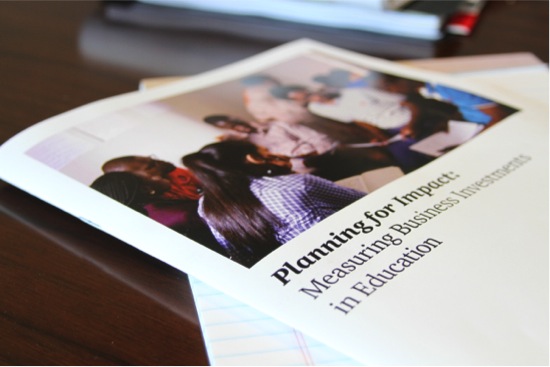Innovative Financing for Education: A Q&A with Ranajoy Basu, Reed Smith

Photo Courtesy of Christian Haugen.
This weekend, a network of researchers, advocates, and policymakers will pool their efforts together for a grassroots gathering to propel this September’s Sustainable Development Goals talks forward. Their mission: To collaborate strategically on solutions that will free the world from poverty by 2030. The occasion: the RESULTS UK annual conference.

Ranajoy Basu, Reed Smith
Representing GBC-Education, Ranajoy Basu, a partner in the Structured Finance team at our member company Reed Smith, will join a panel on innovative financing for social solutions. At Reed Smith, Ranajoy advises clients on best practices for executing social impact bonds (SIBs), an emerging financing trend allowing the private sector to take on financial responsibility for social causes with the possibility of earned interest if the impact is declared a success. This past spring, Ranajoy advised on the first cross-border SIB that will help reduce dropout rates and increase education quality in Rajasthan, India where 40 percent of girls leave schools before reaching fifth grade. The initial investment was raised by UBS Optimus Foundation and then lended to Educate Girls, an NGO that will implement the plan in-country. If the impact goal is reached within three years as affirmed by Idnisight, an independent evaluator, then the Children’s Investment Fund Foundation will pay investors back with returns.
Right now, there are 58 million children around the world who are not in school, and limited financing is a major barrier to ensuring universal primary education. Business leaders are now joining leading NGOs and policymakers, offering new ideas to finance global education. RESULTS UK conference is one of several gatherings of citizen leaders that will take place throughout the rest of 2015 to discuss solutions for the unmet UN Millennium Development Goals.
Q. What does innovative financing for education look like? Could it be used to support education in emergencies?
A. Innovative finance means structuring a solution that addresses a social cause — be it health, sanitation, water, immunization — or, in this case, education. But the notable feature typical of innovative financing lies in the impact that that funding has to specific projects. That is, the impact (such as decreasing dropout rates in schools) is interlinked with the payout (or return on investment) that investors get from having large funds or government organizations back their projects.
As a financial mechanism “pay for performance” based solutions like in SIBs lend itself well to support projects focused on education in emergencies.
Q. Okay, that makes sense, but can you unpack that a little bit?
A. Sure. Typically, a social impact bond, also known as a “Pay for Success Bond,” is a contract with the public sector in which a financial commitment improves social outcomes resulting in public sector savings. The financial structure of a social impact bond will be based on a financial solution targeted towards addressing a social issue (the intervention). The financing is targeted to achieve a clearly defined outcome (the success metrics). The other thing that one has to consider is being able to identify the risks that could impact the success of the project. So you structure a solution whereby the actual outcome is clearly defined. And, the beauty of addressing education as an “impact” is that these risks are very, very easily identifiable.
Q. You recently closed your first international social impact bond to help Educate Girls implement programs that will improve student performance in 150 Rajasthan schools in India. How does the social impact bond work exactly?
A. The development impact bond will raise funds (through the UBS Optimus Foundation) to support Educate Girls, an NGO which enrolls girls in schools and improves learning outcomes for more than 20,000 children in some of the remotest parts of Rajasthan in India. The Children’s Investment Fund Foundation (CIFF) will pay for social outcomes with returns at 7-13 percent if the program is a success. For us that means retaining 10,000 girls and improving results in basic English, Hindi, and math for 20,000 boys and girls in about 150 of the most poorly performing schools.
What sets this transaction apart from traditional grant or donor-based funding is that, because working capital is coming from private investors, Educate Girls will have the flexibility to use this funding as they see fit and adapt programs to data they are getting on the ground as to what the students’ needs are.
Q. Why would the government hand over such a great responsibility to the private sector? And conversely, why might a corporation welcome it?
A. The beauty of SIB transactions is that typically these structures have proven to be a useful risk transfer mechanism in a particular country. The project’s sponsor (traditionally governments) addresses social issues by paying a certain amount of money over a certain period of time according to their policy. But now, you have private investors saying, ‘Rather than you, the government, running this program, we will address these issues and we will take on this project.’ The government stands to benefit with the help of private investors as they have guaranteed funding. This is good news for investors too since it enables the private sector to use their power to wear two hats. The first being profit and the second being social responsibility. This dual role that SIBs push investors to take has the momentum to change the way government works in addressing social issues the long term.
Q. That’s a good point.
A. I think [the shift in sponsorship from the government to the private sector] is a great development because, if we are really to target major social issues around the world, it will have to be through a concerted effort between both government agencies and private sector funding.
Q. Do you see this emerging group of sponsors continuing to grow down the line?
A. Yes. At the moment, there is a lot of excitement about the potential of social impact structuring. I definitely think that there is a space where there will be more institutional investors becoming socially conscious so the social investor community is definitely growing
Q. The Up For School campaign calls for increased financing for education. After leading Reed Smith’s involvement in the campaign, it seems like you believe that there is a clear role for corporations to be socially responsible, particularly in the education sphere. Why should the business community support this petition?
A. The cause of education is such that the importance of it can not be underscored enough in today’s world. The importance of this petition speaks for itself.
